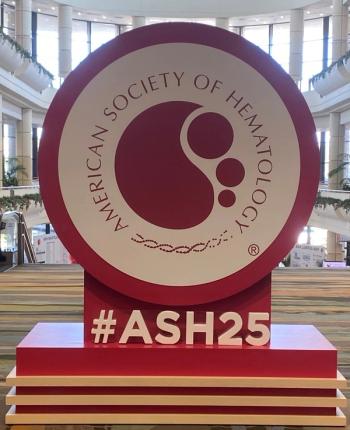
Survival Outcomes in Advanced NSCLC Improved With Use of Cemiplimab
Key Takeaways
- Cemiplimab plus chemotherapy doubled the 5-year survival rate compared to chemotherapy alone in advanced NSCLC patients.
- The EMPOWER-Lung 3 trial showed a median overall survival of 21.1 months with cemiplimab versus 12.9 months with chemotherapy alone.
The use of cemiplimab with chemotherapy showed durable improvements in survival outcomes for non-small cell lung cancer (NSCLC) after 5 years.
Durable and significant improvements in survival outcomes were seen at 5 years of follow-up among patients with
These results came from the phase 3 EMPOWER-Lung 3 trial (
The initial results of the EMPOWER-Lung 3 trial were published in
The results presented in 2025 confirm the previous results after a median follow-up of 60.9 months.1 The participants were consistent through the follow-up time, with data from all 466 original patients included in the follow-up results. OS remained strong in those taking cemiplimab with chemotherapy when compared with chemotherapy alone, with a 21.1-month median OS compared with 12.9 months, respectively (HR, 0.66; 95% CI, 0.53-0.83). Those who took cemiplimab with chemotherapy had a 19.4% probability of survival after 5 years compared with 8.8% in those receiving chemotherapy alone.
Progression-free survival (PFS) was also stronger in those taking cemiplimab. The median PFS was 8.2 months in those taking cemiplimab compared with a median of 5.5 months in those receiving chemotherapy alone (HR, 0.58; 95% CI, 0.47-0.72). Objective response rate was 43.6% in those taking cemiplimab compared with 22.1% for those on chemotherapy alone and the median duration of response was 16.4 months in those taking cemiplimab compared with 7.3 months in those receiving chemotherapy alone.
The safety profile was consistent with previous studies and 96.5% of those on cemiplimab experienced an adverse event of any grade compared with 95% in those on chemotherapy alone. The most common adverse events experienced by those on cemiplimab included anemia (46%), alopecia (38%), and nausea (25%) among others. A total of 30% of those taking cemiplimab had adverse events that were rated grade 3 or higher, which caused discontinuation in 4.5% of the population and death in 1% of the population; the chemotherapy arm had 18% who had grade 3 or higher adverse events, 1% of the patients discontinued, and 0.7% died.
“Collectively, these data underscore [cemiplimab]’s utility across a variety of patient types, both as a single agent and in combination with chemotherapy,” Ana Baramidze, MD, PhD, head of the Clinical Research Department at Todua Clinic, said in a statement.1
References
1. Libtayo (cemiplimab) plus chemotherapy results at five years reinforce significant and durable improvements in survival outcomes for advanced non-small cell lung cancer. News release. Regeneron. September 9, 2025. Accessed September 10, 2025.
2. Gogishvili M, Melkadze T, Makharadze T, et al. Cemiplimab plus chemotherapy versus chemotherapy alone in non-small cell lung cancer: a randomized, controlled, double-blind phase 3. Nat Med. 2022;28(11):2374-2380. doi:10.1038/s41591-022-01977-y
Newsletter
Stay ahead of policy, cost, and value—subscribe to AJMC for expert insights at the intersection of clinical care and health economics.













































